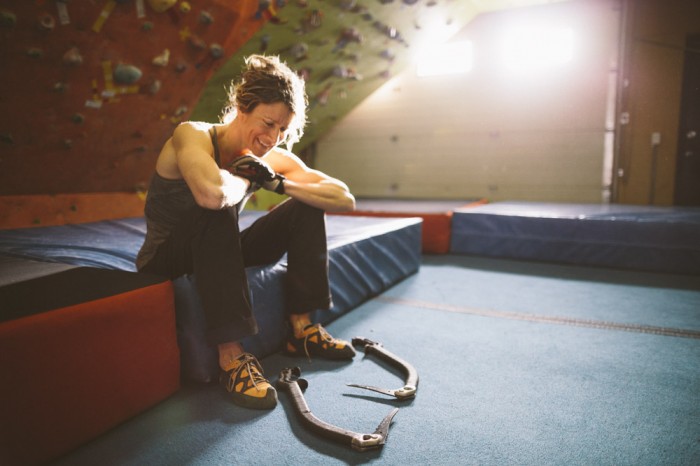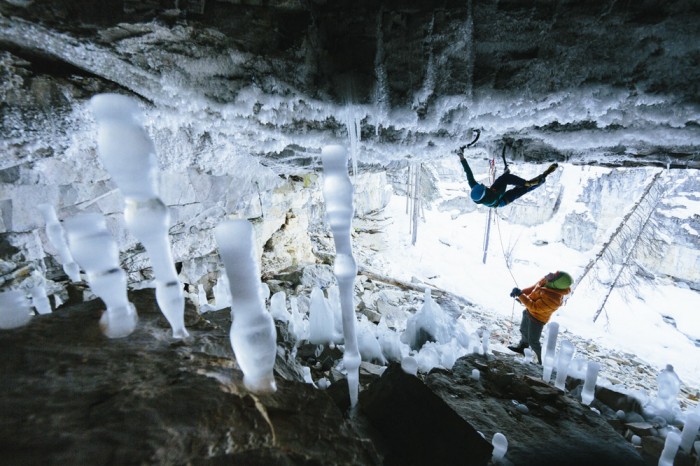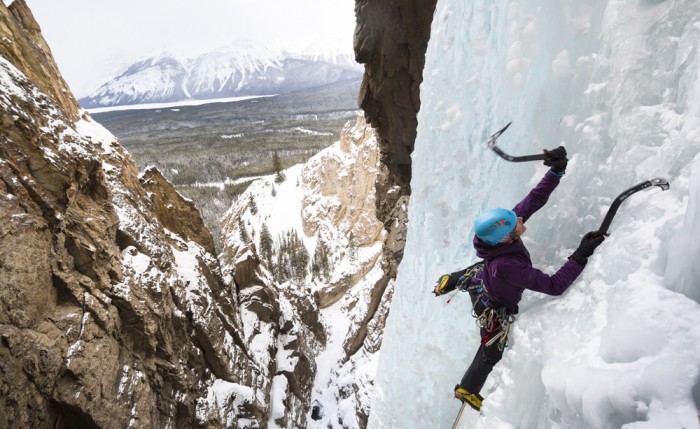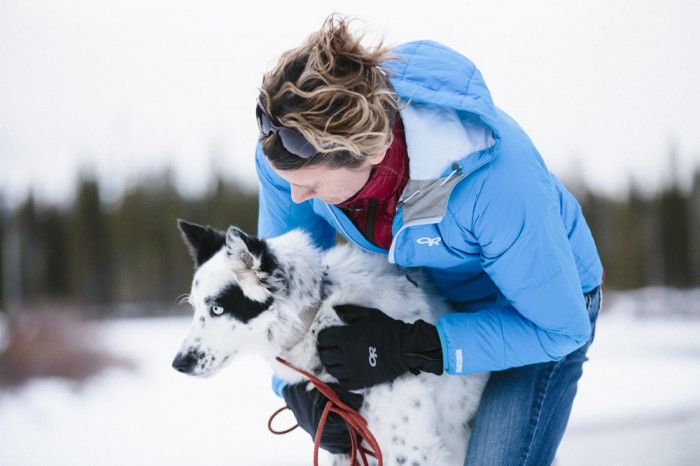Ladies we Love: Ice Climbing Expert Sarah Hueniken

[This Ladies we Love profile is the sixth installment in our monthly series featuring the highly inspiring roster of female athlete ambassadors from Outdoor Research. They are skiers, climbers, mountaineers, and more—all breaking down barriers and pushing the edge.]
Sponsored Love from
Can women be in the lead? A highly respected and experienced alpine and ice climber, Canmore-based Sarah Hueniken has made it a focus to help women gain the confidence to lead on rock and ice. Her women’s-specific alpine and ice climbing camps aim to teach basic and advanced skills, while at the same time working on boosting confidence and decision-making skills.
Here, Sarah shares her vision, the 4 skills women can use to lead on rock and ice, plus her scariest climbing experience.
WomensMovement.com: What drives you to climb?
Sarah Hueniken: Climbing has given me so much over the past 20 plus years…partnership, being outside, the challenges, the rewards, the problem solving, the movement.
The world is a constant busy place—work, relationships, emails, phones. But nothing else matters though when you’re climbing. Your entire focus is on the moment and the next move, how the hold feels and how you can maximize it, how you are breathing, how much energy you have left for the next move, how to control the fear as you move past your last piece of gear, the decision whether or not to try, fall, or take.
Being present in the moment is the biggest gift life can give, and climbing provides that for me over and over again. It is addictive. Climbing has also taught me to trust myself. Especially in a medium like ice where the consequence of a bad decision while leading can be really huge.

Photo: Forest Woodward/Outdoor Research
WM: What inspired you to launch women’s-specific rock, ice, and alpine camps?
Sarah: I took an Outward Bound course at 14 and was unwillingly placed in an all-girls group. This proved to be extremely valuable for me in many ways. Reflecting on it, I know that myself, along with the other girls, took on tasks and challenges that we would have held back on if we had been with boys. Sometimes girls/women just need a bit of space to step up and try.
I find that I improve much more with positive feedback then I do with a lot of constructive feedback. This is often different from a lot of my guy friends. They don’t seem to mind the constructive feedback of failure as much as I do—and it often fuels them. This simple difference is important with women’s learning—building the foundation for success and then giving them the final push to trust themselves to go past what they thought they were limited to.
In the summer, we offer Women’s Alpine camps and, in the winter, I run a few women’s-specific ice camps. A big focus on these camps is providing the skills and opportunity to be out front.
WM: What are 4 key skills women can work on to gain the confidence to be out front?
1. Set Yourself Up for Success. Get out with other people that aren’t always better and faster than you. I still find myself taking a back seat when I’m with stronger and more confident climbers—It’s easy to do. Set yourself up in a leadership role by getting out with people that know you want to be out front and maybe even need you to be!
2. Own it. Do the research ahead of time and be your own best resource. If it’s an alpine route, look at the map, ask for beta, make the gear list, and know how long of a day it will be and how to make it a success. Leaving these loose ends to your boyfriend or climbing partner is easy to do but, unless you are just along for the ride, grab the steering wheel before you start the drive.
3. Live Your Level. Second things that are above you and take advantage of the pitches and sections that you are able to lead. Seconding harder things is always a great way to improve your climbing, but it’s still very important to jump in the lead when it is climbing that you are capable and comfortable on. Mileage on both are important!
4) Reflect on What Worked and What Didn’t. Climbing is not just physical. There are a ton of external and internal elements that play a role on your day. Take the time at the end of a climb whether it went well or not, to reflect on why. This doesn’t mean, make excuses…I was too cold, I’m tired from yesterday, I need new shoes…but really thinking about what failed you or what helped you have success.
WM: Most beautiful place you’ve ever climbed?
Impossible! How can one compare all the incredibly beautiful places that climbing takes you? A place that always seems to welcome me with beauty, adventure, and magic would be the Ghost Wilderness Area, only an hour away from home.

Photo: Forest Woodward/Outdoor Research
WM: Scariest climbing experience?
Sarah: I’ve had a lot of close calls with lightening that have usually made me question my job. I’ve run into bears, a cougar once, near misses with rockfall and avalanches, getting lost, but overall I’ve been incredibly fortunate to not have had any huge epics.
Oddly enough, I think my scariest moment was walking off the top of a cliff at the end of a top-roping day. It was raining lightly, I had skateboard shoes on, and got too close to the edge and slipped. The worrisome part was that I was aware of this potential and I still managed to let it happen! As I fell, I pushed away from the rock to project myself towards a tree growing off the face of the cliff. I bear hugged it but the momentum of the swing didn’t allow me to stick the move and I thought I was done for.
Somehow though, I landed in mud, like a cat on all fours with only some turf in my helmet and scrapes and bruises. It is often those times when you aren’t on a rope (and you let your guard down) that can be the most dangerous.
WM: 5 things that are always in your climbing pack?
Sarah: A toque (Canadian for “warm hat”), enough layers to clothe a small village (weather is unpredictable in Canmore), radio, Spot, or cell phone (there is no reason in this day and age to be left without a form of communication in case something goes wrong), a small bivy tarp (emergency rain and weather protection), and a first-aid kit.
WM: Favorite in-your-pack energy snack?
Sarah: Can’t go wrong with a few handfuls of jelly beans and some trust Babybels.
Learn more about Sarah’s alpine and ice climbing camps here.

Photo: Forest Woodward/Outdoor Research
Kamagra oral jelly Online something to buy the most convenient way. He doesn’t demand from you any actions except how to visit the website. And in separate with goods necessary to you to put the end. To specify your address and to wait for the supplier to whom you will give money.



February 5th, 2015 at 8:10 pm
Amazing! She said so many things that struck a cord with me. What a great interview, and an inspiration. SO HAPPY to have found this website. :)
February 6th, 2015 at 12:52 pm
So glad you found us, Kat! Thanks for your great comments.